2001: A Space Odyssey. Close Encounters Of The Third Kind. Star Trek: The Motion Picture. Blade Runner. All of these effects-driven films were brought to the big screen by some of the cinema’s great directors – Stanley Kubrick, Steven Spielberg, Robert Wise, and Ridley Scott. And all of them have the wizardry of Douglas Trumbull to thank for helping them realize their vision.
In 1979, Trumbull was enlisted by Paramount Pictures and director Robert Wise to come to the rescue of Star Trek: The Motion Picture, which was having serious problems with its visual effects and was in very real danger of missing its December 1979 release date. As part of TrekMovie’s celebration of the film’s 40th anniversary, we spoke to Mr. Trumbull about how he got involved, the race to get the film’s special effects done, working with Robert Wise, and more.
Trumbull will be heading to Star Trek Las Vegas next week, where he will appear on a panel celebrating the film’s anniversary. More details about that and the rest of the convention can be found at creationent.com.
Trumbull talks The Motion Picture
TrekMovie: Paramount initially approached you to produce the effects for Star Trek: The Motion Picture and you declined. Why was that?
Douglas Trumbull: Well, I was working for Paramount, and I was under an employment contract with them with an entity that I had started, which was the research and development operation that was a branch of Paramount called Future General Corporation. I had a specific contract to do the work that we were developing there, which was to try to explore the future of cinema. And we had developed all kinds of new technologies for simulation rides, video games, and motion picture technology – high frame rate, stuff that led to the Showscan process. I was already a director in my own right, and I was developing Brainstorm at Paramount, for the Showscan process.
So I got caught up in a kind of a business conflict with Paramount, because they didn’t have any appetite for making Brainstorm or for pursuing Showscan, they were just in big trouble about Star Trek: The Motion Picture. The production was going ahead, the live action was all shot, but none of the visual effects were working. The company they hired to do the visual effects (Robert Abel and Associates) was basically failing. The studio was extremely upset about it because they were being threatened by a class-action lawsuit from the exhibitors if they didn’t deliver the movie on schedule. So that was the dynamics that surrounded the movie, that the exhibitors were going to target Paramount in a class-action lawsuit to kill what they call Blind Bidding, because exhibitors have paid in advance for the right to show the movie. So Paramount was sitting on a bunch of money, I think it was around $30 million dollars in advance payments.
And they didn’t want to be sued and they didn’t want to go bankrupt, so they determined that they had to just pull out all the stops and try to get the movie done. So that’s when they re-approached me and basically said, “What do you need in order to agree to do this job?”, which was not something I wanted to do. But I said, “Okay, I will do the job, but only if I can have Showscan and Brainstorm back. And out of my contract.” So that was the trade-off that we made. You know, in exchange for a hefty fee.
TM: You had roughly a year to complete all of the effects work?
Trumbull: No, we had 7 months. It was a real crash program. We had to do all the visual effects work. There were as many shots in Star Trek: The Motion Picture as Star Wars and Close Encounters combined, and it was a big problem. It took a massive effort to try to pull it off. We had visual effects crews working 24 hours a day, 7 days a week, for the entire period.
TM: You had to bring in John Dykstra to help you with the workload.
Trumbull: Yeah. He had worked for me on Silent Running, and he was an instrumental guy. I helped set up ILM for George Lucas, and John spearheaded the first ILM iteration [in Van Nuys]. After ILM [in southern California] was closed by George Lucas, John and his pals, including my father, Don Trumbull, formed a new company called Apogee, to do visual effects for films. And they had a really good track record and were doing really great work. So we collaborated with them, and we had to figure out how to do part of the visual effects in 65-millimeter negative, and part of the visual effects in 35-millimeter VistaVision, because we were both using different techniques.
TM: So your Dad worked on this film? He had a history in the picture business before you.
Trumbull: Yes. Before I was born, he was a young visual effects, kind of a rigger mechanical engineer and had worked on The Wizard of Oz and a number of other films in Hollywood. But he was not happy working in Hollywood and he was really much more engineering-oriented than he was celebrity-oriented, and he went into the aircraft business later.

Douglas Trumbull shooting the office complex model for Star Trek: The Motion Picture
TM: You were facing an extreme time crunch. What were the biggest challenges that you faced within that? Was there a particular sequence of shots that was more challenging than others?
Trumbull: Everything in the movie was challenging, and one of the first challenges we faced was that the previous company that was doing the effects had commissioned the construction of a miniature of the spacecraft. It wasn’t any good, in my opinion, and they had missed some fundamental questions about what kind of detail it would require to make it look beautiful. And how would you light it, given that a lot of the movie takes place in interstellar space and you have to ask yourself, “Well, where’s the key light, where’s the fill light? And why is it, why do you see it?”.
The first task we took on was to basically redesign the ship, and make it so that it could light up itself, with light sources on the body. So it looked really great even with no key light, and there was a tremendous amount of detail painted on the surface. And then part of that was the dry dock sequence, which was also misconstrued. They had really crazy ideas at this previous company, to shoot in separate passes, and then composite them optically, which in my opinion was just never going to work, and it was not necessary. There was no point in doing it. We had to redesign the lighting and everything of the dry dock to make it work with the craft. So that was the first thing. And then there were other miniatures that had been built for the orbiting space station and stuff like that, that had to be done better and illuminated better and rigged up for motion control photography.
And then there was the whole separate project. The way we split the project in half was to have John Dykstra and Apogee do all of the V’Ger sequence or most of the V’Ger sequence. They did the exteriors of it and we did the interiors.
TM: So you were responsible for all the detailing on the Enterprise, then?
Trumbull: Yes.
TM: That is one of the most gorgeous miniatures I’ve ever seen. It is stunning.
Trumbull: I’m really proud of it. There was an airbrush illustrator named Ron Gress, who did all the painting on the surface, and it really came out quite beautifully. Took him weeks and weeks and weeks of round-the-clock work to get it right.
TM: Yes, and I think ILM didn’t really pay tribute to that when they did the subsequent films. I feel like the ship was never lit quite as well as you did it.
Trumbull: Yeah.
TM: You actually directed a sequence in this film, the spacewalk sequence with Spock that was completely re-conceived.
Trumbull: Yeah. What happened on that was that Robert Wise, who I had known previously because I had worked with him on The Andromeda Strain, had directed the spacewalk sequence of the whole crew hanging on wires on a stage in sets. And I thought the whole thing just looked completely unusable and just not serviceable at all. Badly lit, badly designed, and it just looked like guys hanging on wires. And this was before the more present-day of wire removal and a lot of stuff we could do digitally. They just didn’t pay any attention to weightlessness or any of the things associated with that. I urged Robert Wise to agree to delete that entire sequence and let me replace it, and he said that was fine. I mean, Bob just had tremendous trust in me to just go ahead and do whatever I felt was necessary to get the movie done. And he was not comfortable with visual effects, we didn’t have much of a dialogue about it. We redesigned and re-imagined the entire spacewalk sequence with Spock. He saw the storyboards and he knew what we were doing but it was quite a challenge to put that whole thing together in such a short period of time.
TM: It’s a stunning sequence, one of the highlights of the film.
Trumbull: Thank you. I thought it would be fun to just get kind of abstract and make it a fantasy dream sequence in a way, not literal.
TM: It’s based on a lot of Robert McCall paintings.
Trumbull: Yeah, Bob came on and did a lot of illustrations for that sequence, which we pretty much replicated with miniatures and visual effects and paintings.

Douglas Trumbull setting up a shot for the spacewalk.
TM: You’ve worked with a lot of great directors over the years – Kubrick, Spielberg, Ridley Scott, Terrence Malick, and this was your second picture with Robert Wise. What was it like working with him, particularly on this project, where there were so many problems during principal photography and all the craziness that happened during post?
Trumbull: Well, Bob was a really good story director and character director, but he was not comfortable with visual effects. He just didn’t know very much about what needed to be done to make this movie work. And so he had stayed out of that, and I think that might have been one of the reasons that the movie derailed initially is that no one knew what was going on, or why it was not going well. He was wise enough, so to speak, to realize he should just turn it over to somebody else.
He knew that I’m a director and the idea of me directing sequences – I directed the whole sequence approaching the Enterprise to the dry dock and all that stuff, and they cut it together. And then did the same for the spacewalk sequence. The rest of the movie was directed by Bob. And that required some clever interfaces with him and the studio, because there was one sequence, I can’t remember what we called the sequence, but where the emissary from V’Ger comes on board the bridge, this vivid source of light moving around, which was just a guy holding a really bright light in the shot, and that was a really complicated problem to fix in post-production. We worked out a way of projecting that onto a rear projection screen and reflecting it off a Mylar mirror and then having a motion control device behind the mirror that kind of puckered it by pushing on it from behind, which would make the whole image of the guy and the light collapse into nothing. That was a really tricky thing. You can do it today easily with computer graphics, but in the day of optics and film, it was really difficult.
TM: It works in the film.
Trumbull: Yeah it came together. And then Bob Swarthe, who did a lot of the moire techniques and the streak stuff through the transit in the wormhole, that came out really great. And then Scott Squires was heading up the wormhole laser scanning technology for us. It was all a laser scan effect that I dreamed up, a slit-scan with lasers.
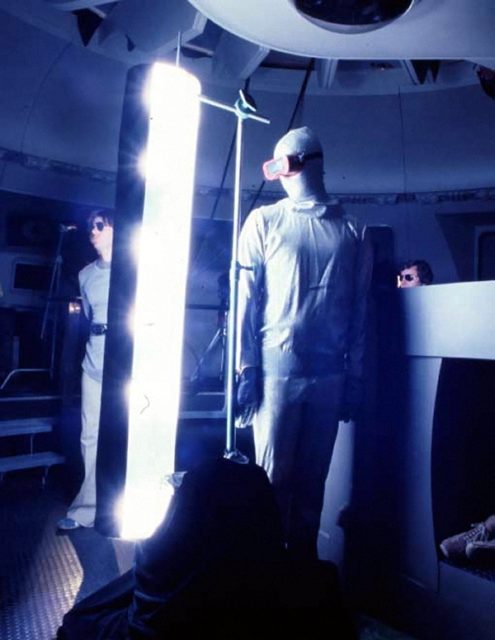
Technician on the bridge with the V’Ger “probe” for Star Trek: The Motion Picture
TM: The movie’s well known for having one of the most harrowing post-productions in history, so it’s a miracle that you guys managed to pull the entire thing together the way you did.
Trumbull: Well it was really hard, and it was – it is a miracle we pulled it off. And I ended up in the hospital for two weeks when we delivered it. I was just a nervous wreck and not in good physical shape. I had gall stones, I had stomach ulcers. I was just really wrung out by the time that was completed.
TM: So you couldn’t even take a victory lap at the end?
Trumbull: No, no. It was just really survival time.
TM: There’s no business like show business, right?
Trumbull: That’s right. There’s nothing like it. Show must go on.
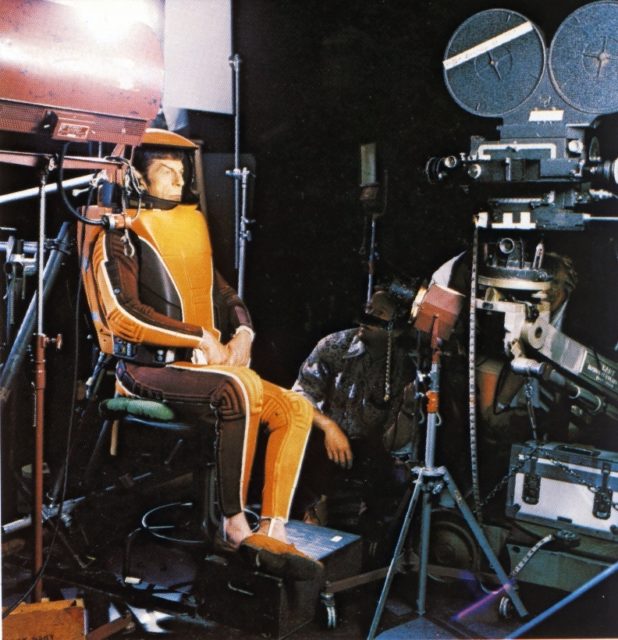
Douglas Trumbull directing Leonard Nimoy for the re-conceived spacewalk in Star Trek: The Motion Picture
TM: Did you work with Gene Roddenberry at all?
Trumbull: No, I had no contact with him. That was kind of an interesting back story. I don’t know if anybody knows this story, but Gene was, I was told by the studio, a very, very difficult man to get along with. And in order to progress on the movie production, even before I came on board, Paramount just arranged to put Gene on a kind of a lush vacation cruise someplace. I don’t know anything more about it than that.
TM: During that era, a lot of the big effects pictures were struggling with their visual effects. Star Wars and Superman had problems. Close Encounters also came close to not being released on time. How would you place this movie in the context of those, or is this so much worse?
Trumbull: I wasn’t there so I can’t compare directly, but I would say in my experience, the Star Trek movie was the most troubled production I had ever encountered.
TM: It’s a shame because there’s a good movie in there that sometimes got lost.
Trumbull: Yeah. It was a very, very, big, big idea.
TM: It was.
Trumbull: At times it got a little corny, and a little sappy, and it needed a kick in the butt to make it look better than what anyone might have expected, because the problem that Paramount was having with the movie idea was that…they just didn’t feel comfortable that you could transport a television series to feature films. That was their really big worry, that’s why the poster says, “There is no comparison,” i.e. to television. And they were trying to differentiate from television and give it some kind of epic qualities, and I assumed that one of the reasons for hiring Wise was The Sound of Music and West Side Story. A feeling for kind of epic spectacle was what they wanted to see.
TM: I think that was the right way to go.
Trumbull: Right. Right.
TM: In recent days, it’s been revealed that Paramount is exploring the possibility of assembling a 4K version of Wise’s director’s cut.
Trumbull: Oh really? I didn’t know that.
TM: It was announced during San Diego Comic-Con. They have not completely confirmed it yet, but Paramount seems to feel comfortable making a soft announcement. Have you seen the director’s cut and if you have, what did you think of the changes they made?
Trumbull: Well, I think it’s all fine. I don’t have any objection to any of it. I just think one of the most important things that the studio may or may not do, and I don’t know because I haven’t been contacted about a 4K restoration, is that all the visual effects shots were shot in 65 millimeter. And that’s what we did on the restoration of Blade Runner, which makes it look so much better. We went back and scanned the original, the dupe negatives of the visual effects shots were cut into the original, so the movie in a Blu-ray version looks much, much better. So I don’t know what’s going to happen with Star Trek: The Motion Picture, no one’s even talked to me about it. I don’t know if they’ve retained the negatives of the 65 millimeter shots.
TM: You’re going to be at Star Trek Las Vegas in a couple of weeks to celebrate the 40th anniversary of the film. Is this your first Star Trek convention?
Trumbull: Yes it is, actually!
TM: Very cool. Trek conventions are their own unique thing.
Trumbull: Should be pretty interesting.
See Douglas Trumbull as part of special TMP 40th panel at Star Trek Las Vegas
Douglas Trumbull is attending the Star Trek Las Vegas convention for the first time next week. He will participate in a special “Star Trek: The Motion Picture 40th Anniversary Retrospective” panel along with Rick Sternbach (illustrator for Star Trek: The Motion Picture) and Star Trek art department veterans Doug Drexler, and Michael and Denise Okuda. The panel will be held at 12:30PM Saturday, August 3rd in the Nimoy Theater at STLV.
The annual Star Trek Las Vegas convention kicks off next Wednesday, July 31st and runs through to Sunday, August 4th at the Rio Hotel and Casino. It features over 100 guests. TrekMovie will be there and provide our usual coverage.
Tickets are still available. More information is available at creationent.com.

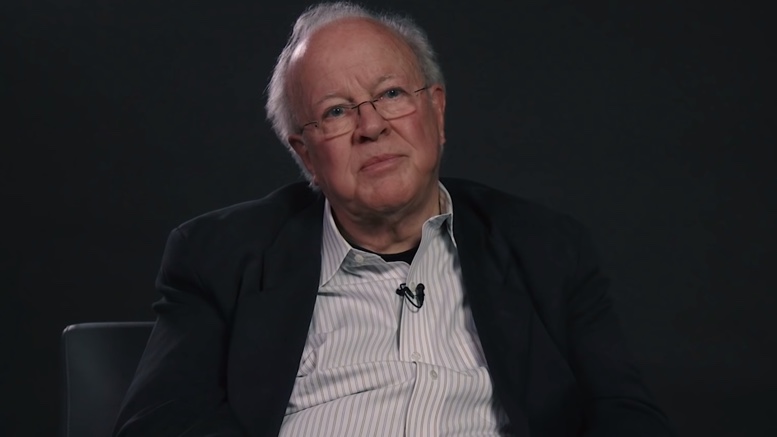
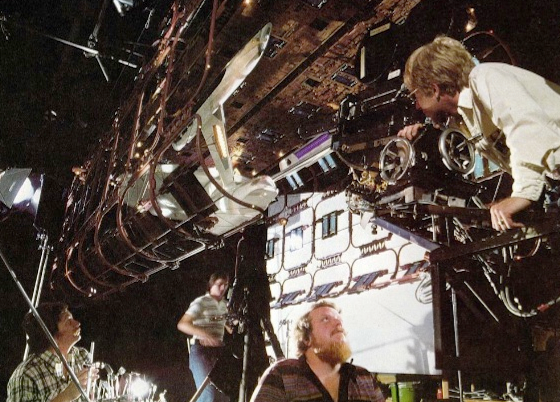
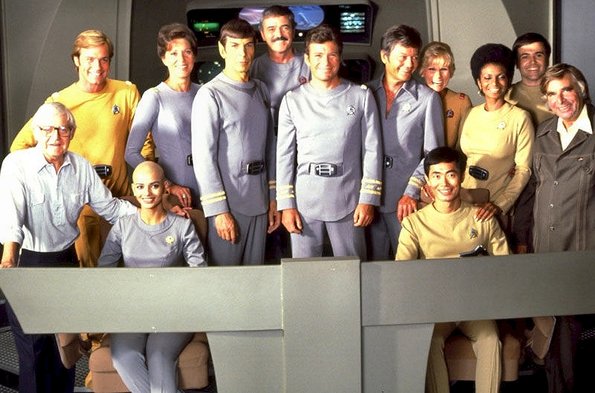
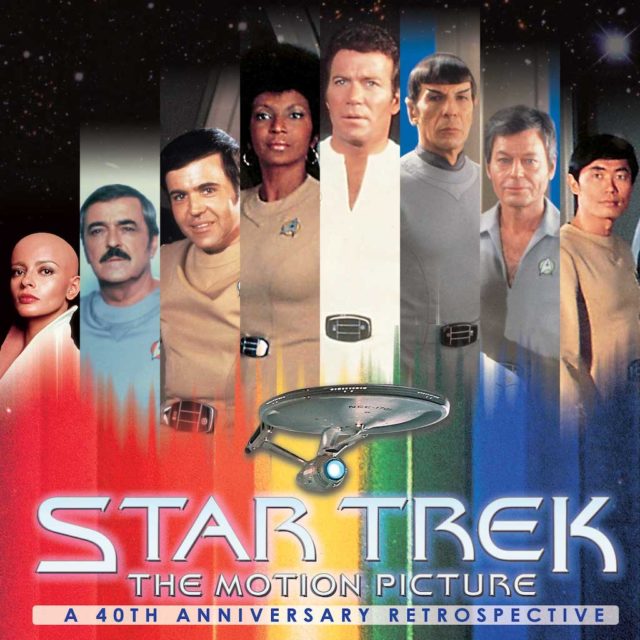
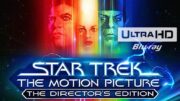
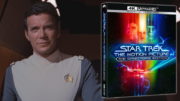
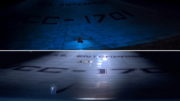
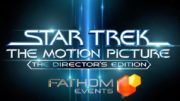
I love the big look of this film.
Him saying he doesn’t know if they retained the 65mm elements sounds more hopeful than I would have expected. And he’s right of course, that BLADE RUNNER approach would absolutely be the way to go.
You’ll appreciate this. We made sure to pass Trumbull’s contact info along to the TMP:DE team. So hopefully they’re looking into if the 65mm film was preserved, and consulting with him.
Fingers crossed that Paramount kept everything. Seeing all that in 65mm resolution would be sensational.
kmart,
Takes me back to when you and I 1st started exchanging comments on trekmovie which was on this very topic, i.e. the 65mm TMP elements and how much a re-master could achieve.
the v’ger cloud in particular is supposed to be absolutely glorious and subtle beyond belief in 65mm according to the artists quoted in RETURN TO TOMORROW. I covet the chance to see that properly and be properly awed.
I hope they digitally clear out the dust in the lens from the Enterprise departure sequence
Kev, one thing I’ve never understood about you is your seemingly contradictory reverence for TMP while at the same time being one of the Great Bird haters. TMP is about as close to a Roddenberry wet dream as they come!
Fascinating stuff. I particularly enjoyed the story of putting Roddenberry on a cruise during production just to keep him out of their hair! I think I recall hearing about that before but it was nice to hear it again.
Still today, the best special effects of any Trek movie.
It’s funny seeing the guy standing next to lights that will be the V’Ger probe. I remember how scary that scene was for me when I saw it as a child. It was just so strange and wonderfully alien. Sadly, nothing like that has ever been seen again in Star Trek.
Star Trek has never looked as good to me as it did in TMP.
Star Trek The Motion Picture was the only Trek film that was fully cinematic, until the Kelvin timeline films came along. The other Trek films were just jumped-up TV episodes by comparison.
Even the Kelvin films don’t match the cinematic feel of TMP. Their use of 20th century settings like the brewery for engineering, that storeroom where we first meet Scotty and even the outer warp core from STID always take me right out of the experience; they look like obvious redresses of current locations. TMP sold me on it’s 23rd century setting from the first frame of film to the last.
I recall how the movie was a hugely impressive cinematic experience on the big screen overall that Christmas. Especially the whole ‘Enterprise’ reveal and light-up sequence as it readied to leave it’s dry dock, which was perfectly accompanied by Goldsmith’s wonderfully epic score. And Dykstra did great work with the opening Klingon ships sequence too.
But over the years (as was always the case with other effects-heavy movies after their cinema runs), ST:TMP’s visual impact was mostly lost when watched on small 4:3 screens when it’s home versions were released. However, some of that visual impact has thankfully returned, seeing as much larger widescreen tv screens are readily available nowadays, and I’m pleased about that aspect for the sake of this and other movies.
The re-worked ‘Director’s Edition’ is the definitive version for me, and I look forward to seeing a high definition home release of it eventually. Trumbull is bound to get a very warm reception at the Las Vegas convention for all his efforts, and deservedly so.
A total class act and a true genius. Great interview.
“Trumbull: No, I had no contact with him. That was kind of an interesting back story. I don’t know if anybody knows this story, but Gene was, I was told by the studio, a very, very difficult man to get along with. And in order to progress on the movie production, even before I came on board, Paramount just arranged to put Gene on a kind of a lush vacation cruise someplace. I don’t know anything more about it than that.”
That’s…not too far from the truth. He got removed from the production because his script rewrites were getting worse and worse and they had no ending despite the fact that they were still shooting and getting into a time crunch. It’s part of the reason he got ‘kicked upstairs’ and never had any real input on subsequent Trek films made during his remaining lifetime.
The Memory Alpha entry for TMP is a fascinating read if anyone here ever has a couple hours to kill.
I’ll also say that the production of TMP in and of itself is something that could serve as a plot for a movie.
It’s more complex than that. The book Return to Tomorrow covers Roddenberry’s involvement in detail.
Mike S.,
That’s just the company line. Kev-1 is right that it is much more complicated than that.
Paramount execs, constantly waffling between whether Trek’s return should be on the television screen or the motion picture theater screen, blew millions before one frame of footage was ever shot for TMP and needed a scapegoat. The time crunch was totally manufactured by their using the blind bidding which gave them $30 million by Trumbull’s account from Paramount, but I recall the exhibitors in their legal threats threw around a $40 million figure up front; again, before 1 frame of footage for TMP was shot.
And Roddenberry didn’t pick the FX teams, the Paramount suits did.
And then Paramount let them run unchecked for a year, ignoring all the reports of not meeting deadlines. Par brought it on themselves.
I’ve worked up a detailed treatment for movie about TMP b-t-s, but I’m trying to re-finish my script about the formation of ILM first, because it is a better and funnier story, to be honest.
I’d place a blind order for a 4K release of TMP right now. Loved the look of that movie, except the uniforms…. A little too communal for me lol
That would actually drive me to buy a 4K TV, which I’ve been putting off for a while now.
Seriously. If they were real cheapskates, they could probably KickStart it in a matter of days, based on the number of fans clamoring for this.
Okay. As I stated in the other thread, if a proper restoration is to take place, they should go to the source elements, assuming they still exist. Do whatever clean up is necessary and scan at 16K for posterity. :)
Great interview. I would have asked what was printed in Starlog back in the day about Trumbull reportedly stating that he would provide adequate effects by its release, better VFX by Feb ’80 and the BEST possible if they released the movie by Easter. With the rumor of Paramount doing a 4K version, I’m curious to know what the visuals would have been had they gotten their wish with the Easter ’80 release. I hope someone who attends the con will ask since I can’t go :(
Also, Trumbull was working on a HFR visual projects that they showed at the Cinerama in Seattle a few years back. I’m curious as to how that is working out and if we are going to see a roll out of that soon.
As far as the Sep 15 rerelease, the LA area has the movie. Nothing here on the east coast as of this writing.
Terrific work. Even though I would have liked to have seen the original space walk, if for no other reason than to get more Kirk and Spock together, the excellence of this picture is still outstanding today. Also saw an Apollo II doc which showed Mr. Trumbull working for NASA as well.
I’ve seen some of the memory wall footage. Believe me, it was not salvageable.
This movie sounds like it was an effing nightmare to make in just about every way. All that effort. All that money. And all for something nobody liked (at the time anyway). Was it that difficult to come up with something on about a 15m budget that would’ve been a colourful space action movie with mucho space battles, phaser fights, Kirk-fu, creepy alien planets, Romulans, Klingons, and space babes, with a bit of philosophical stuff. Y’know what everyone was kind of expecting it to be..
I think the answer to this was in the interview itself. Mr Trumbull himself mentions that Paramount wanted to separate the cinematic version of Star Trek from the what can considered more “cheesy” television version. This is the main reason they got a guy like Robert Wise to direct the picture, to try to make it more epic in scale.
and thats why they went back to the series for the sequel(s)
We LOVED it at the time.
Really? Most fans, critics, audiences were very disappointed. Its ok it love it now as the grand cinematic ‘Star Trek A Space Odyssey’ (There is no comparison) as theres TWOK and the rest that got it right
That movie was horrible and boring.That movie almost destroyed Star Trek .
A common misconception. In reality: “Star Trek’s first foray into cinema was also one of the franchise’s most successful domestically to date. Released in 1979 and directed by Robert Wise—who also helmed West Side Story, The Day the Earth Stood Still and The Sound of Music, among many others—it centered on the crew of the original Enterprise reuniting for the first time in years in order to investigate and possibly fight back a mysterious approaching space cloud. While visually dazzling, The Motion Picture was criticized for featuring multiple prolonged, unbroken shots of the Enterprise travelling through space, and Harold Livingston of Time said it lacked drama and “human interest.” While it was quite successful both for its time and by modern standards, Paramount considered the film a commercial disappointment.”
That’s your opinion, martin mcqueen.
Thank you, Daniel! The documented facts and numbers speak for themselves. TMP most certainly did not kill Trek in any way, shape or form.
I personally LOVE TMP, not only as a Star Trek film but also as a true science fiction film.
Mcqueens logic is sound
The only reason we have the subsequent movies, TNG, DS9, etc was because of the success of TMP. If TMP had truly been a failure Paramount would have cut their losses and that would have been the end of Star Trek.
Remember the Lost in Space movie with Matt LeBlanc? Now there was a failure that killed any possibility of a revival until the recent Netflix reboot.
When adjusted for inflation, it is the second highest grossing movie behind the 2009 Star Trek.
There’s more to good science fiction than lans flares, ray guns, space battles and loud explosions. I suppose you find 2001: A Space Odyssey boring as well.
The photon torpedo effects in TMP were very dramatic as well. I was always disappointed how “cheap” the torpedos looked in the subsequent films. Everything about TMP was grand in scope. I wish Star Trek films could return to that.
The FX are still the best of the entire film series. even the JJ films.
I’ve loved this movie since the first time I saw it, which was (I think) whenever it made its television debut. It’s not everyone’s cup of tea, I guess; but boy, it sure is mine.
For a great “oral history” about the making of ST:TMP and the rest of Trek history, for that matter, check out “The 50 Year Mission” Volume 1 which covers the 1st 25 years of “Star Trek”. Written by Mark Altman and Ed Gross, it is, in my opinion, the definitive history of all that is “Star Trek”.
also the recent Return To Tomorrow (a book of the unused TMP Cinefantastique issues)
Very cool interview. Good to hear from the very talented Mr. Trumbull. In spite of its many flaws, the visual effects work on TMP was awesome. I always like to hear the behind-the-scenes accounts straight from the people themselves. This was great.
many flaws of TMP, not the visual effects work.
Tons of gorgeous work, but some terrible shots too. Another three months of post and that probably wouldn’t be the case, but the last shot of the lil space guy fleeing epsilon 9 is hideous to the point of making me embarrassed to even watch it. The view of styrofoam vger when Kirk orders reverse angle on the viewer in the theatrical cut is just as bad. The moment when the asteroid blows up in the original actually has a frame where you can see the rig the pyro is set off from, not that the director’s cut is much better with its silly fireball in space, which belongs in STAR WARS not TMP. Some hideous matte paintings too, a few of which were great until they timed the film to a different color level and wrecked them, like San Francisco, which was supposed to be dusk, and they killed it with a blue-gray tint.
Well, I guess he said at all. No need for the Vegas panel now…
To note, whilst I believe Ron Gress was involved with the airbrushing of the studio model of the Enterprise it was actually Paul Olsen who did a lot of the detailing especially the aztec patterns (outlined in his book http://www.startrek-enterprise.us/) all of this info is available at the Memory Alpha wiki page detailing the history of the physical and later CGI models of the Enteprise (including the refit)and as someone else has mentioned the Return to Tomorrow book…
https://memory-alpha.fandom.com/wiki/Studio_model
Fingers crossed Paramount do the right thing, and scan from the 65mm elements, IF they still exist. This film could loo absolutely stunning, and be an ‘event’ film, like 2001 if re-released. I’m sure this could absolutely be a surprise money spinner for Paramount too if done correctly, and consequently the positive word of mouth this would create within the genre community. Here’s hoping! Day 1 purchase for me if so!
Still my favorite Trek movie, Flaws and all, It was such a grand scale movie. I still have two movie posters, one that has “There is no Comparison” and my favorite, “The Human Adventure is Just Beginning”.
I have not seen the 4K version of Blade Runner. But from what i understand it is only the final cut. George Lucas style. None of the theatrical versions were included.
Whenever Douglas Trumbull has something to say, I always make the time to stop and read it because I know it will be informative and I’ll learn something new. His resume and accomplishments are truly extraordinary.
Great interview. And well done passing along his interest to the other parties involved. So many times you hear about things never happening because “well, no one ever asked me about it.”
Ron Gress, did all the painting on the surface ? I though it was Paul Olsen´s work.
Gress just did part of engineering, but in vfx circles, had been getting all the credit for nearly 40 years. It was only in the late 90s that Olsen’s part was revealed.
Why isn’t Decker on the anniversary poster?
Anthony Thompson,
I suspect, most likely, because of the actor’s self-confessed crimes against children?